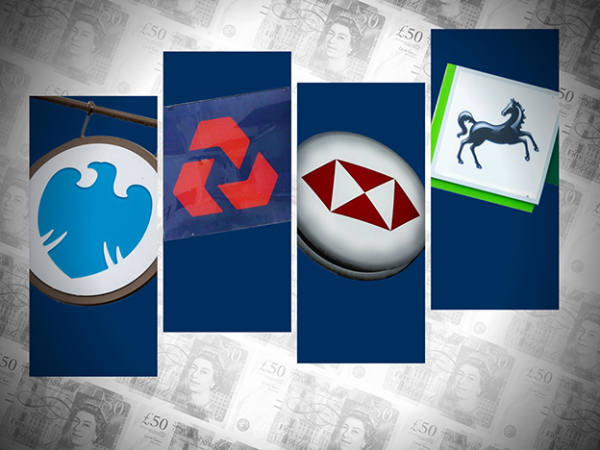- Gold has a low correlation to stock markets and can hold up well during times of crisis
- It is not always very defensive or a good hedge against inflation
- A cheap and fairly accurate way to track the gold price is an ETC that holds gold
At last month’s Jackson Hole meeting, Federal Reserve chair Jay Powell gave the strongest indication yet that monetary policy would start to reverse course by the end of the year. The economy had met the test of “substantial further progress” towards the US central bank’s inflation objective, he said. This may create volatility in the stock market and its effects could also have an effect on the price of gold.
Many arguments have been made in favour of holding gold, including that it offers protection against inflation, is a store of value at times of crisis and is a hedge against stock market volatility. In reality, while gold has exhibited all of these qualities at various points, it has proved an unreliable friend. In 2020, for example, its price fell in the second half of the year in spite of rising inflation.
Gold’s reputation for defensiveness is largely because it resists manipulation by central banks. It is a finite currency in a time of rampant government money-printing. It also has a low correlation to stock markets, for example just 0.16 per cent to MSCI US index, according to the World Gold Council. It also tends to do well during times of crisis such as the three years following the financial crisis and March to September 2020, when it looked like the pandemic would derail the global economy.
The problem is that more has been made of gold defensiveness than is strictly true. For example, its claim as an inflation hedge is on shaky ground. It has occasionally protected against inflation, most notably in the 1970s and 1980s. But data from the World Gold Council shows that over the past 50 years, only 16 per cent of the variation in gold prices can be explained by changes in consumer price index (CPI) inflation.
The most reliable indicator for the gold price appears to be expectations of real interest rates. In other words, the market’s view on the direction of interest rates and inflation. Gold has no yield, so the opportunity cost of holding it rises as interest rates rise. The weakness in the gold price at the start of this year can almost certainly be attributed to expectations of higher interest rates as inflation took off. The gold price has stabilised as central banks have deferred rate rises, insisting that inflation is transitory. As such, the prospect of tapering potentially holds some difficulty for the gold price.
Adrian Ash, director of research at BullionVault, says: “If cash in the bank is losing real value at an accelerating pace, then gold offers an obvious and proven bolthole. Over the past 50 years, significant turning points in gold have coincided with peaks and troughs in real interest rates. It's a sign of just how confused financial markets are about inflation right now that US bond yields, having ignored the three-decade highs in US inflation, are nearing their record lows of 1974 and 1980 in real terms and gold prices are 15 per cent below last August's all-time highs.”
This suggests that the gold price may struggle to make progress if the Federal Reserve tapers. That said, if inflation rises, pushing real interest rates even more negative, it may do better. To add confusion, gold appears to work on a ‘buy the rumour, sell the fact’ basis. Although the price could remain weak while there is still uncertainty about rate rises, Ash points out that in previous rate-rising cycles the gold price has started to rise when rates rise.
Another scenario that would be good for the gold price, even if disastrous for everything else, could be if investors start to lose faith in central banks –if the Federal Reserve is viewed as being slow on inflation, for example. Bill Dinning, chief investment officer at Waverton Investment Management, says: “If people start to lose faith in policy or believe that uncontrolled inflation is returning, gold has a role to play as a store of value.”
Nevertheless, David Miller, executive director at Quilter Cheviot, points out that even in a crisis situation, gold doesn’t always behave as expected: “We had a situation where chaos reigned and there was significant printing of money, but the gold price didn’t shift. That shows how difficult it is to call. There was a catalyst last year and I can’t see one this year. I don’t dismiss the risks of this monetary experiment, but confidence in central banks remains high for the time being.”
Ash points out that the change of narrative from monetary easing towards tapering and even discussion about raising rates hasn't seen a rush for the exits. Gold exchange traded funds (ETFs) worldwide, for instance, have shrunk less than 10 per cent since last October's record-high holdings. That compares with a 25 per cent liquidation during the first 10 months of 2013's taper-tantrum gold crash. This suggests that gold may be able to hold its value if tapering is relatively slow.
Ash adds: “Today's record-high stock markets don't erase the case for gold as a long-term risk hedge. On the contrary, they appear to be reinforcing the appeal of gold as investment insurance among asset managers and private individuals alike. And with good reason.”
| Fund performance | ||||
|---|---|---|---|---|
| Fund/benchmark | 1 year total return (%) | 3 year cumulative total return (%) | 5 year cumulative total return (%) | 10 year cumulative total return (%) |
| BlackRock Gold & General* | -21.51 | 67.84 | 17.77 | -22.12 |
| Jupiter Gold And Silver | -15.55 | 64.93 | 19.72 | |
| Ninety One Global Gold | -26.73 | 67.41 | 27.55 | -13.98 |
| FTSE Gold Mines index | -27.93 | 71.10 | 24.42 | -31.47 |
| Invesco Physical Gold ETC | -11.07 | 41.00 | 30.23 | |
| iShares Physical Gold ETC | -10.98 | 41.20 | 30.52 | 14.37 |
| LBMA Gold Bullion LBMA Sterling/Troy Ounce in GB | -10.52 | 42.00 | 31.68 | 17.49 |
| LBMA Gold Price PM in GB | -10.19 | 42.54 | 31.91 | 18.40 |
| Source: FE Analytics, 31 August 2021 | ||||
| *The history of this unit/share class has been extended, at FE fundinfo's discretion, to give a sense of a longer track record of the fund as a whole | ||||











